Creating your own dress is a fun and rewarding experience. It allows you to pick the perfect style, fabric, and fit. This guide will walk you through the steps of making a simple dress, even if you’re a complete beginner!
Getting Started
First, you’ll need some essential tools:
- Fabric scissors
- Sewing machine (or needle and thread)
- Measuring tape
- Pins
- Straight edge (ruler)
- Iron
You’ll also need fabric and thread. For your first project, choose a woven fabric that’s easy to work with, like cotton or linen. Avoids slippery fabrics like silk or jersey until you’re more comfortable sewing.
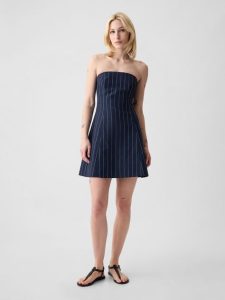
Choosing Your Style
There are many dress styles to choose from! Here are a few beginner-friendly options:
A-line dress:
This flattering style has a fitted bodice that flows out to the hem.
Shift dress:
This simple dress has a straight silhouette from shoulder to hem.
Wrap dress:
This dress features a v-neckline and wraps around the body to tie at the waist.
Once you’ve chosen a style, you can find inspiration online or in fashion magazines. Look for patterns or tutorials that match your skill level.
Taking Measurements
Taking accurate measurements is key to a good fit. Here’s what you’ll need to measure:
- Bust: Measure around the fullest part of your bust.
- Waist: Measure around your natural waistline.
- Hips: Measure around the fullest part of your hips.
- Length: Decide on your desired dress length and measure from your shoulder to that point.
Tip: Write down your measurements for reference.
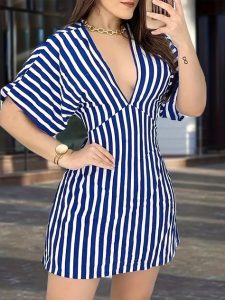
Finding a Pattern (or Making Your Own)
There are two ways to get a dress pattern: buy one or make your own.
-
Buying a pattern: Look for beginner-friendly sewing patterns online or at craft stores. Choose a pattern sized for your measurements.
-
Making a pattern: You can use a simple rectangular pattern for a shift dress or an A-line dress. Tutorials are readily available online.
Cutting the Fabric
Once you have your pattern, lay it out on your fabric according to the instructions. Pin the pattern to the fabric and carefully cut around the edges, leaving a seam allowance (usually around 1/2 inch).
Tip: If you’re unsure about cutting into your fabric, make a practice cut from scrap fabric first.
Sewing the Dress
Here comes the fun part, sewing your dress together! If you’re using a sewing machine, follow the pattern instructions for stitch length and seam types.
Here’s a general order for sewing a basic dress:
- Sew the shoulder seams.
- Sew any darts or bodice shaping.
- Attach the skirt to the bodice.
- Sew the side seams.
- Hem the sleeves and the bottom of the dress.
Tip: Take your time and don’t be afraid to rip out stitches and start over if you make a mistake.
Finishing Touches
After sewing the main parts of the dress, you can add some finishing touches:
- Buttons or zippers: If your dress design includes buttons or a zipper, install them now.
- Trims or embellishments: You can add ribbons, lace, or other trims to personalize your dress.
- Final pressing: Iron your dress to give it a neat and polished look.
Congratulations! You’ve made your own dress!
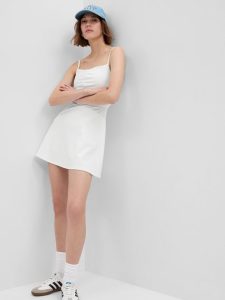
Learning More
Sewing is a great skill to learn and there are many resources available to help you improve. Here are some ideas:
- Online tutorials: There are countless sewing tutorials available online that cover everything from basic techniques to advanced dressmaking.
- Sewing classes: Consider taking a sewing class at a local community center or craft store. This is a great way to learn from a professional and get hands-on experience.
- Sewing blogs and websites: Many sewing blogs and websites offer tips, tricks, and inspiration for sewing projects.
With practice, you’ll be able to create more complex and stylish dresses. So grab your fabric, thread, and creativity, and start sewing!
Finding the Perfect Fabric
Now that you have a basic understanding of the sewing process, let’s delve into the world of fabric! Choosing the right fabric is essential for creating a dress that drapes nicely and feels comfortable to wear.
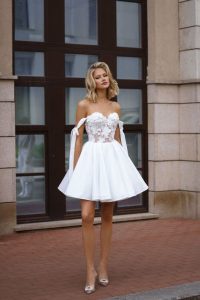
Fabric Types
When selecting fabric for your dress, consider the weight, drape, and breathability. Here are some popular options for beginners:
-
Woven cotton: This versatile fabric comes in a wide variety of colors and patterns. It’s relatively easy to sew with and holds its shape well.
-
Linen: Known for its cool, breathable feel, linen is a great choice for summer dresses. However, it can wrinkle easily.
-
Denim: Denim can be a fun choice for a casual dress. Opt for lighter weight denim to avoid a stiff look.
Fabric Stores
There are many places to find fabric for your dress project. Here are a few options:
-
Local fabric stores: Many communities have local fabric stores that offer a wide selection of fabrics and trims. The staff can be a valuable resource for advice and recommendations.
-
Online fabric stores: Online fabric stores offer a vast selection of fabrics, often at competitive prices. Be sure to factor in shipping costs when comparing prices.
-
Thrift stores and discount fabric stores: Thrift stores and discount fabric stores can be treasure troves for finding unique fabrics at a fraction of the price. You might need to wash the fabric before using it, but it’s a great way to be sustainable and save money.
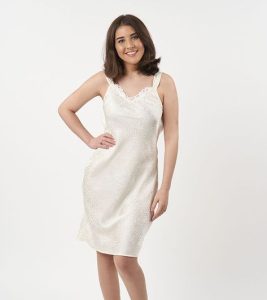
Tips for Choosing Fabric
-
Match the fabric to the style: Consider the weight and drape of the fabric in relation to the style of dress you’re making. For example, a flowy dress would benefit from a lighter, drapier fabric.
-
Pre-wash your fabric: Most fabrics shrink a bit when washed. Pre-washing your fabric will help ensure your dress fits properly after construction.
-
Buy a little extra: It’s always better to have a little extra fabric than not enough. This will give you some wiggle room for cutting errors or making adjustments to the pattern.
With a little planning and these tips, you’ll be well on your way to finding the perfect fabric for your dream dress!
Beyond fabric, there are many helpful tools and notions that can elevate your sewing experience. Here are some essentials to consider:
-
Sewing Needles: Different fabrics require different needle sizes and types. A universal needle is a good starting point, but you might need a specific needle for denim or delicate fabrics.
